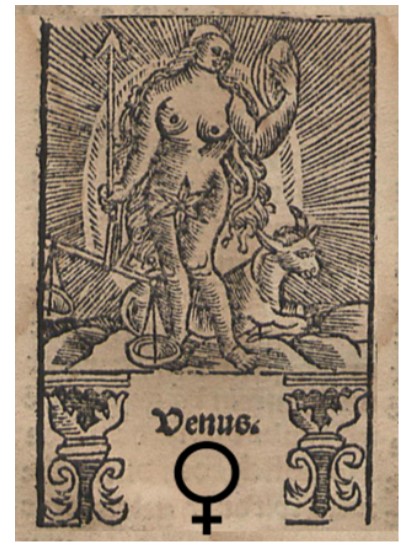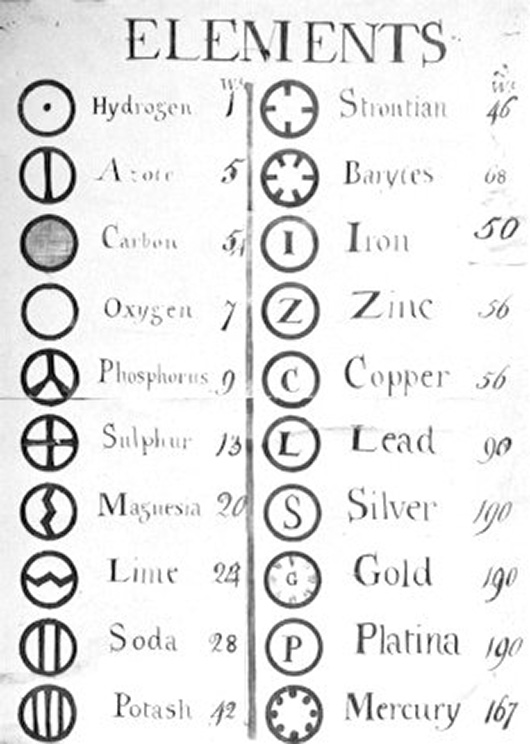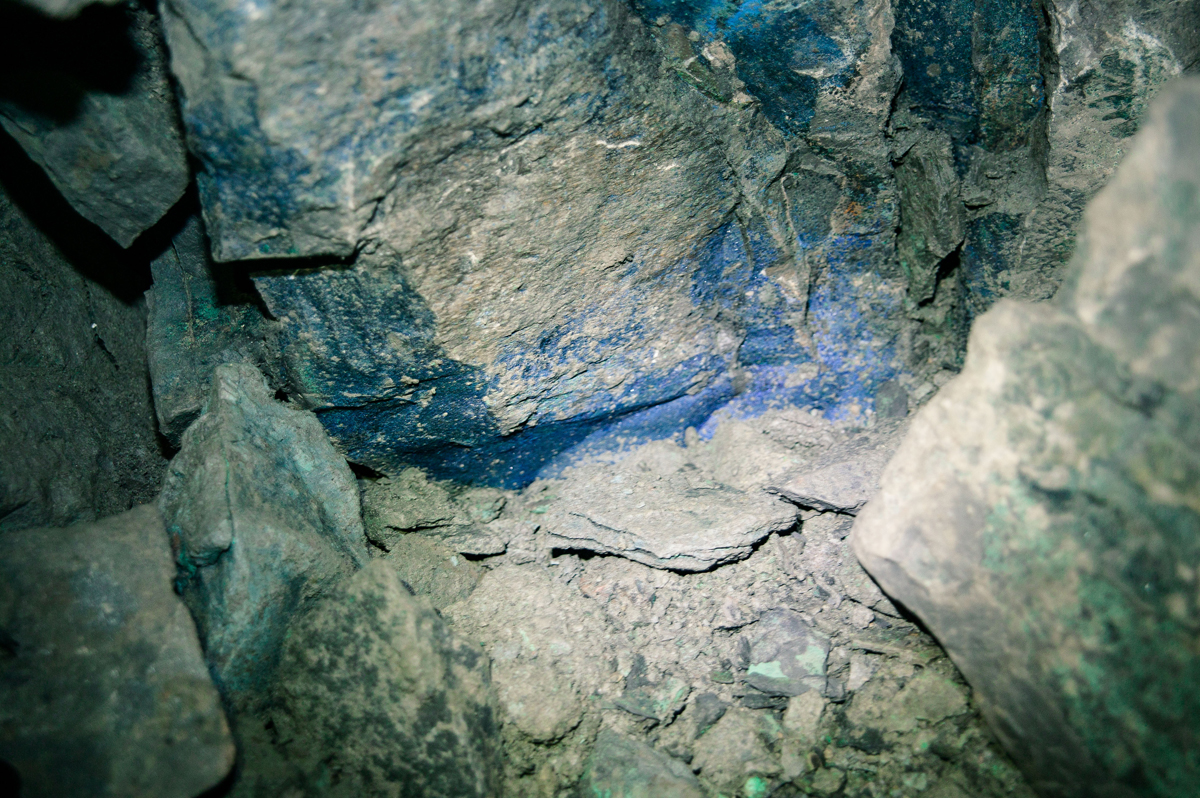> Cuprum, copper, cobre, Kupfer, cuivre, miedź
> The symbol of copper
> Copper minerals
Cuprum, copper, cobre, Kupfer, cuivre, miedź
The name of copper comes from a Greek word – Kypros - which means Cyprus. From mines located in the massif of the Troodos mountains, this raw material was delivered to recipients of the ancient world. Romans called a deposit of this material a Cypriot stone (aes cyprium).A Latin name of copper (cuprum), as well as its names in other languages: French (cuivre), German (Kupfer), English (copper) and Spanish (cobre).

Cyprus, a map of island, public domain

Ancient mines in the Troods mountains in Cyprus, according to www.album.wernerstalder.com
The symbol of copper
In ancient Egypt a hieroglyph Anch (crus ansata).; Egyptian cross) was a not only a symbol of life and fertility but also copper. In ancient Greece this metal was associated with a goodness Aphrodite (Cypriot, Venus). The most beautiful of all inhabitants of Olympus was to emerge from the sea foam in the vicinity of Cyprus. According to the mythology, it was one of her favourite places. The pictogram belonged to Aphrodite became a symbol of the planet Venus and it was used in alchemy to denote copper. This symbol was used to mark copper’s deposits and mines until 18th century. This symbol is also used to designate female sex and femininity.
Along with the era of enlightenment the process of exploring the world and nature gathered pace. At the beginning of the 19th century (1808) the English scientist John Dalton (1766-1844) published a work about atomic theory of the matter construction. Copper was designed there with a pictogram presenting a letter C (cuprum, copper) inscribed in a circle.
The symbol of copper contemporarily known as Cu from the periodic table came from the second half of the 19th century.

A hieroglyph Anch (crus ansata; Egyptian cross) - a symbol of life and fertility and a symbol of copper, public domain

Venus and her symbol on the painting form and of 15th century, public domain

Map from 18th century with copper mines and copper smelter, State Archive in Katowice (Poland)

Dalton’s atomic symbols, public domain

Symbol of copper in periodic table, public domain
Copper minerals
Although the content of copper in the Earth's crust is low - it is assumed that the outside, a 10-kilometre layer of the lithosphere contains approx. 55 grams of copper for each tone of rocks, therefore its concentration cannot be considered rare. In these places, for thousands of years people have founded mines, searching the deposits deeper not only under the ground but also under the bottoms of seas and oceans.
Among over 160 copper minerals only 18 can be found in deposits which have industrial importance. They are mainly sulphides (90%), usually containing iron, less often antimony and arsenic, but oxides (9%) may also occur. Native copper (1%) is also of industrial importance.
Native copper - 100% of Cu; occurs sometimes with dopant of Fe (up to 2.5%), Au (from 2 to 3% in gold copper) and Ag and As. It is known from hydrothermal deposits in the Upper Lake region, it is found in the oxidation zone of sulphide copper deposits (Chile) or it constitutes a binder for sedimentary deposits (Uzbekistan).
Chalcocite (Cu2S) - up to 80% of Cu (79.8% of Cu and 20.2% of S); dopants Ag, Fe, Co, Ni, As and Au et al. It is created in cementation zones (secondary mineral enrichment), but also among sedimentary rocks. Its characteristic feature is dark grey colour.
Chalcopyrite (CuFeS2) - up to 35% of Cu (34.57% of Cu, 30.54% of Fe and 34.9% of S, dopant Ag, Au, Ti et al). Chalcopyrite, called the "gold of fools", is a mineral with a tan-yellow colour and a metallic luster.
Bornite (copper ore, Cu5FeS4) - up to 63% of Cu (63.3% of Cu, 11.2% of Fe and 25.5% of S, chemical analyses show variation in the range of minerals 52-65% of Cu, 8-10% Fe and 20-27% S, Ag admixtures).It occurs in both hydrothermal deposits (Ural, Kazakhstan, Zambia, Zair), and sedimentary deposits in the area of Mansfeld (Germany); a brown, copper-red mineral, often blue-violet.
Covelitte (CuS) up to 66% of Cu (66.5% of Cu, 33.5% of S dopant Fe, sometimes Se, Ag, Pb). The mineral is most often found in the zones of secondary sulphide enrichment (Chile, Bolivia), as a product of hydrothermal activity also in sedimentary copper deposits; a mineral with a strong indigo or blue-violet colour.
Tetraedrite ([Cu, Fe] 12Sb4S13). Sulphur with variable chemical composition; copper content ranges from 22 to 52% of Cu. It is a steel-grey or black mineral.
Cuprite (Cu2O) - up to 89% of Cu (88.8% of Cu and 11.2% of O). It is formed as a result of oxidation of sulphide copper deposits, mainly chalcocite and bornite. It often occurs along with native copper and is of industrial importance (Chile, Peru); a red-coloured mineral, sometimes used as a jeweller’s stone.
Tenorite (CuO) - theoretically 79.9% of Cu, 20.1% of O; formed as a result of oxidation of copper sulphides, often forms mixtures with carmite; is found at Lake Upper (the USA), in Chile in the Atacama Desert.
Malachite (Cu3 (CO3)2(OH) 2) - up to 57% of Cu (57.4% of Cu, 19.9% of CO2 and 8.2% of H2O) and slight admixtures of CaO Fe2O3, SiO2, ZnO and others. It is formed as a result of the oxidation of copper sulphides, especially with limestones and dolomites. The deposits in the Ural region are well-known. It has a green colour, nice drawing, it is used as a semi-precious stone in jewellery, used as a cladding in representative building and furniture industry.
Azurite (Cu2CO3 (OH) 2) - up to 55% of Cu (55.2% of Cu, 25.6% of CO2 and 5.2% of H2O). It is usually pure, sometimes it contains Au blends. Like malachite, it is formed as a result of the oxidation of copper sulphides; a blue-azure mineral.
Chrysocolla ((Cu; Al)2 H2Si2O5(OH)4• nH2O).It is considered a gel. It is formed as a result of the oxidation of copper ores in a hot and dry climate, occurs in the form of infiltrations and incrustations (Zambia, Zimbabwe); green, blue-green or blue, it is quite common; used as a jewellery stone.

Native copper, collections of the Copper Museum in Legnica, photo by D. Berdys

Chalcopiryte, Romania, Dobruja, collections of the Copper Museum in Legnica, photo by D. Berdys

Massive chalcopyrite concentration, collections of the Copper Museum in Legnica, photo by D. Berdys

Concentration of copper mineralization: chalcopyrite, bornite, chalcocite, cassine, quartz, Romania, Dobruja, collections of the Copper Museum in Legnica, photo by D. Berdys

Malachite on copper-bearing marlite, Poland, Lower Silesia, copper mine in Leszczyna, photo by D. Zapał

Azurite on copper- bearing marlite, Poland, Lower Silesia, copper mine in Leszczyna, photo by D. Zapał
